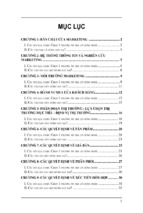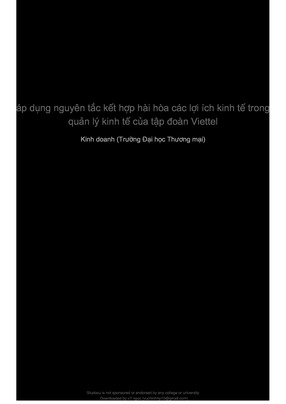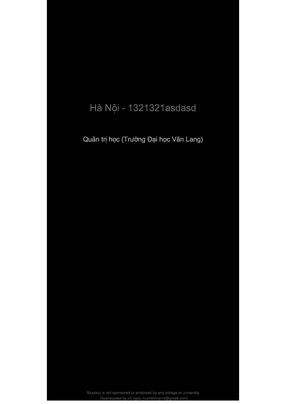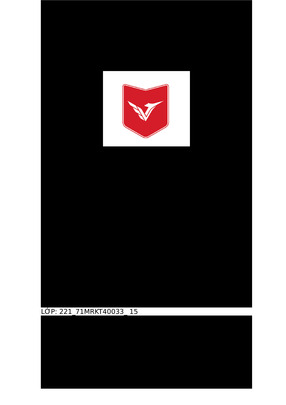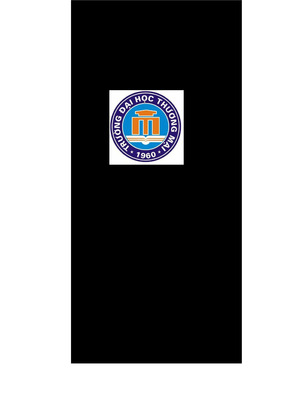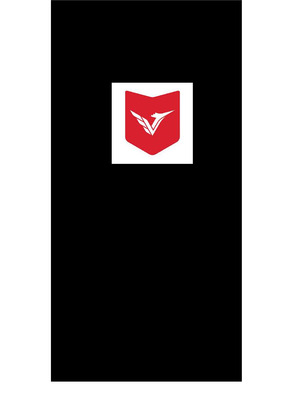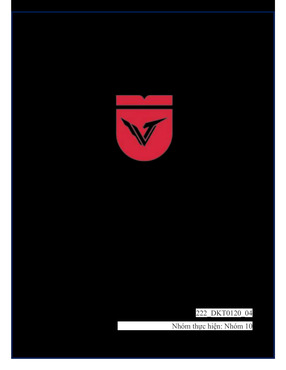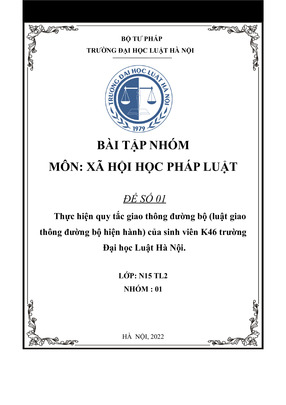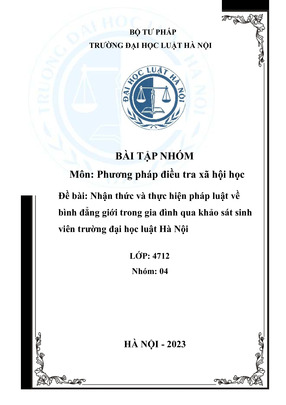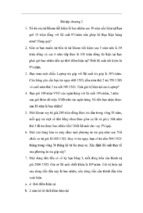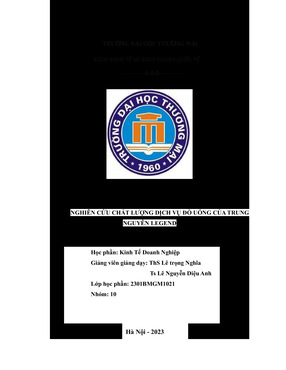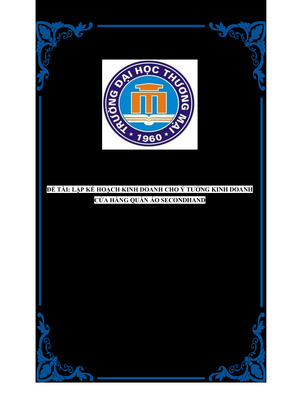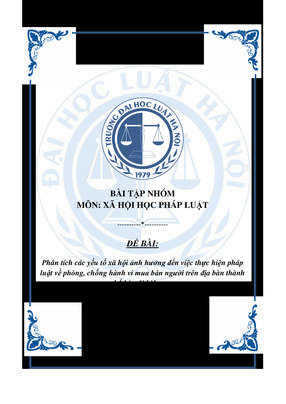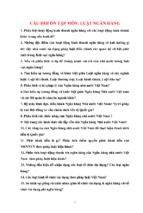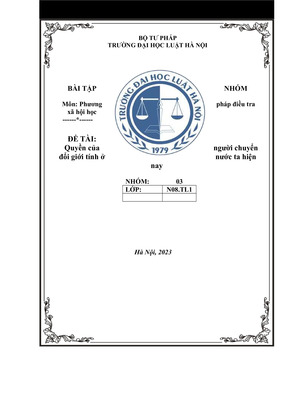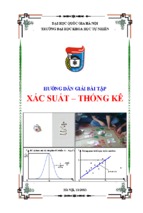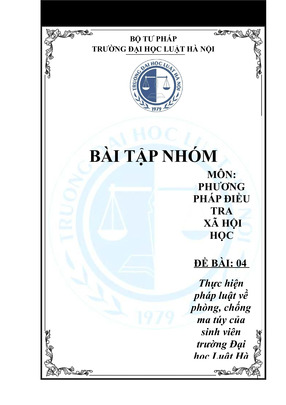MINISTRY OF FINANCE
--------
SOCIALIST REPUBLIC OF VIETNAM
Independence - Freedom - Happiness
---------------
No. 200/2014/TT-BTC
Hanoi, December 22, 2014
CIRCULAR
ON GUIDELINES FOR ACCOUNTING POLICIES FOR ENTERPRISES
Pursuant to the Law on Accounting dated June 17, 2003;
Pursuant to the Decree No. 129/2004/NĐ-CP dated May 31, 2004 of the Government on
guidelines for the Law on Accounting in the business operation.;
Pursuant to the Government's Decree No. 215/2013/NĐ-CP dated December 23, 2013 defining
the functions, tasks, entitlements and organizational structure of the Ministry of Finance;
At the request of Director of the Department of Audit and Accounting Regulation,
The Minister of Finance issues a Circular on guidelines for accounting policies for enterprises.
Chapter I
GENERAL PROVISIONS
Article 1. Regulated entities
This Circular promulgates accounting policies applying to enterprises in every business lines and
every economic sector. Small and medium-sized enterprises applying the accounting policies for
small and medium-sized enterprises may apply regulations in this Circular for accounting.
Article 2. Scope
This Circular promulgates bookkeeping, preparation and presentation of financial statements, not
applying to determination of tax liabilities of enterprises to government budget.
Article 3. Monetary unit in accounting
―Monetary unit in accounting‖ means Vietnamese dong (national sign: ―đ‖; international sign:
―VND‖) used for bookkeeping, preparation and presentation of financial statements of
enterprises. If an accounting unit that mainly receives revenues and pays expenses in foreign
currencies, provided that it conforms to standards prescribed in Article 4 of this Circular may
choose a type of foreign currencies as a monetary unit for bookkeeping.
Article 4. Selection of monetary unit in accounting
1. Any enterprise that mainly receive revenues and pays expenses in foreign currencies shall base
on regulations of the Law on accounting for consideration of selection of monetary unit in
accounting and take legal responsibility. When selecting the monetary unit in accounting, the
enterprise must notify supervisory tax authority.
2. The monetary unit in accounting means a monetary unit meeting requirements below:
a) It is mainly used in sales, provisions of services of the enterprise, which have great impact on
selling prices and service fees and it is normally used as posting prices and used for payments;
and
b) It is mainly used in purchases of goods or services, which have great impact on labor costs,
materials costs and other production costs or operating costs and it is normally used for payments
of that costs.
3. The following factors may also be considered as evidence of monetary unit in accounting of
the enterprise:
a) The monetary unit used in mobilization of financial resources (such as issuance of shares or
bonds);
b) The monetary unit which is regularly collected from business operation and accumulated.
4. The monetary unit in accounting reflects transactions, events, condition pertaining to the
operation of the enterprise. After choosing the certain monetary unit in accounting, the enterprise
shall not change it unless there are major changes in the transactions, events or condition.
Article 5. Conversion of financial statements made in foreign currency into Vietnamese
dong
1. If an enterprise uses a foreign currency as monetary unit in accounting, it must not only
prepare a financial statement in foreign currency but also converse their financial statement into
Vietnamese dong when announcing and submitting the financial statement to regulatory
authorities.
2. Rules for conversion of financial statements made in foreign currency into Vietnamese dong,
comparison information between them shall be reported in accordance with Chapter III of this
Circular.
3. When converting the financial statement made in foreign currency into Vietnamese dong, the
enterprise must clarify the impact (if any) on the financial statement due to the conversion in the
Description of financial statement.
Article 6. Audit of financial statements using foreign currency as monetary unit in
accounting
The lawful financial statement used to announce and submit to Vietnamese competent agencies
is a financial statement made in Vietnamese dong and audited.
Article 7. Changes in monetary unit in accounting
If there are major changes in managerial and business operations leading to the monetary unit in
accounting used in economic transactions failing to satisfy the requirements specified in Clause 2
and 3 of Article 4 of this Circular, enterprises may change their monetary units in accounting.
The change of a monetary unit for bookkeeping to another may be effected only at the beginning
of a new fiscal year. The enterprise must notify supervisory tax authority of the change in
monetary unit in accounting within 10 working days after the final day of the fiscal year.
Article 8. Rights and obligations of enterprises pertaining to organization of accounting in
dependent accounting units having no legal status (hereinafter referred to as dependent
accounting unit)
1. Enterprises must organize their accounting structures and accounting task delegation of
dependent accounting unit in conformity with their operation and management requirements and
not contrary to regulations of law.
2. The following accounts shall be kept records by dependent accounting units having accounting
divisions according to the decision issued by the enterprise:
a) Operating capital granted by the enterprise: the operating capital shall be recorded to liabilities
or owner's equity according to the decision of the enterprise;
b) Transactions in sale, purchase or circulation of goods or services intra-company: revenues or
costs of goods sold only are separately recorded in every dependent accounting unit if such
circulation creates added value in the goods or services. The recording of revenues from internal
transactions to the financial statement does not depend on the format of accounting records
(invoices or internal transaction documents);
c) Task delegation: Depending on centralized or decentralized accounting model, the dependent
accounting units may record undistributed post-tax profit or record revenues and expenses.
Article 9. Registration for amendments to Accounting policies
1. Chart of accounts
a) According to chart of accounts of accounting policies for enterprises issued together with this
Circular, the enterprise shall apply and detail chart of accounts in conformity with requirements
pertaining business and management of every business line and unit, provided that it conforms to
content, structure and method of accounting of equivalent ledger accounts.
b) If the enterprise need to add accounts or sub-accounts or modify accounts or sub-accounts
about names, signs, content and accounting methods, the approval issued by the Ministry of
Finance before the supplement or modification is required.
c) The enterprise may open sub-accounts or sub-sub accounts if the Chart of accounts prescribed
in Appendix 1 of this Circular does not regulate such accounts without the approval of the
Ministry of Finance.
2. Financial statements
a) According to forms and contents of items of the financial statement prescribed in Appendix 2
of this Circular, the enterprise shall detail the items (available) of the financial statement system
in conformity with operation and management of every business line and unit.
b) If the enterprise need to add or modify names, signs, content of items of the financial
statement, the approval issued by the Ministry of Finance before the supplement or modification
is required.
3. Accounting documents and accounting records
a) All accounting documents are optional, enterprise may use forms issued together with
Appendix No. 3 of this Circular or design their forms in conformity with their operation and
management provided that their forms satisfy all requirements as prescribed in the Law on
Accounting and their amended documents.
b) All forms of accounting records (including Ledgers or Journals) are optional. The enterprise
may apply the forms as prescribed in Appendix No. 4 of this Circular or amendments to forms or
accounting cards in conformity with their operation and management provided that they are
sufficient, clear and easy to control.
Article 10. Accounting policies applying to foreign contractors
1. Foreign contractors having permanent resident facilities in Vietnam which are not an
independent unit having legal status shall carry out accounting policies in Vietnam as follows:
a) There are particular contractors eligible for particular accounting policy issued by the Ministry
of Finance;
b) Contractors not eligible for particular accounting policy issued by the Ministry of Finance
may whether fully and partly apply Accounting policies for Vietnamese enterprises in
conformity with their operation and management.
c) If the contractor applies Accounting policies for Vietnamese companies fully, it is required to
apply during the fiscal year.
d) The contractor must notify the tax authority of the accounting policy applied within 90 days
from the date on which it runs business in Vietnam. If there is any change in applying of
accounting policy, the contractor must notify the tax authority within 15 working days from the
date on which the change occurs.
2. Foreign contractor must keep records of every contract license, every transaction in details to
settle contract and make tax declaration.
3. If a foreign contractor who applies fully Accounting policies for Vietnamese companies
wishes to supplement or modify the policies, it is required to comply with Article 9 of this
Circular and obtain approval issued by the Ministry of Finance. Within 15 working days from the
date on which the sufficient documents are received, the Ministry of Finance must send response
on registration of amendments of accounting policies to the foreign contractor.
Chapter II
CHART OF ACCOUNTS
Article 11. Rules for cash accounting
1. The accountant must keep records of revenues, expenses, dispatching or receiving of cash
funds or foreign currencies in the Journals and then calculate the fund balance and every account
in the bank at all times for verification.
2. Deposits made by other enterprises or individuals in the enterprise shall be managed and
recorded similarly to money of the enterprise.
3. When obtaining revenues or paying for expenses, the receipt or payment slips with sufficient
signatures are required as prescribed in regulations on accounting source documents.
4. The accountant must keep records of cash according to currency in details when generating
transactions in foreign currencies, the foreign currencies shall be converted into VND following
rules below:
- Debit accounts shall apply actual exchange rates;
- Credit accounts shall apply weight average bookkeeping rates;
5. When preparing financial statements as prescribed, the enterprise must re-evaluate balance of
foreign currencies and monetary gold according to actual exchange rates.
Article 12. Account 111 – Cash on hand
1. Rules for accounting
a) This account is used to record revenues, expenses and balance of the enterprise‘s fund,
including: Vietnamese dong, foreign currencies and monetary gold. Only received, dispatched or
inventoried cash, foreign currencies, monetary gold shall be recorded to account 111 ―Cash‖. If
the receipts are transferred immediately to bank (not through enterprise ‗cash fund), these
amounts shall not be recorded to Dr 111 ―cash‖, but recorded to Dr 113 ―cash in transit‖.
b) Cash deposits made by other enterprises and individuals shall be managed and recorded
similarly to monetary assets of the enterprise.
c) When receiving or dispatching cash fund, receipt slips, payment slips with signatures of
payees and payers, competent persons are required in accordance with accounting source
document. Deposit order and payment order must be attached in special cases.
d) The accountant of cash fund must write a Cash daybook and record all day-to-day financial
transactions: revenues, expenses, dispatch or receiving of cash funds, foreign currencies and then
calculate the fund balance at all times.
dd) The cashier shall be responsible for management, receiving and dispatch of the cash fund.
The cashier must verify the actual cash balance, then collate the figures between cash fund book
and cash ledger every day. If there is any difference, the accountant and the cashier must verify
them again in order to uncover reasons and propose solutions for the differences.
e) When entering into transactions in foreign currencies, the accountant shall convert the foreign
currencies into VND according to the following rules:
- Actual exchange rate shall be applied to Dr 1112. If the foreign currencies are withdrawn from
banks to pay in the cash fund, the bookkeeping rate of account 1122 shall be applied;
- Weighted average rate shall be applied to Cr 1112
The actual exchange rate shall be determined as prescribed in guidelines for account 413 Differences between exchange rates and relevant accounts.
g) Monetary gold recorded in this account is gold used for value storage, not including the gold
recorded to inventory account and used as raw materials for production of goods for sale. The
management and use of monetary gold shall comply with regulations of law in force.
h) Whenever preparing financial statements as prescribed, the enterprise must re-evaluate the
balance of foreign currencies and monetary gold following the rules below:
- The actual exchange rate applied in the re-evaluation of the balance of foreign currencies in
cash is the foreign currency-selling rate of the commercial bank where the enterprise regularly
enters into transactions (chosen by the enterprise) at the time in which the financial statement is
prepared.
- The monetary gold shall be re-evaluated according to the buying prices on the domestic market
at the time in which the financial statement is prepared. The buying prices on the domestic
market are prices announced by the State bank. In case the State bank fails to announce gold
buying-prices, the buying-prices announced by enterprise entitled to trade in gold as prescribed
shall be chosen.
2. STRUCTURE AND CONTENTS OF ACCOUNT 111 – CASH
Debit:
- Received cash, foreign currency or monetary gold;
- Cash, foreign currency or monetary gold in excess detected under verification;
- Exchange differences due to re-evaluation of foreign currency balance at the reporting time (if
foreign currency rate rises against VND);
- Differences due to re-evaluation of monetary gold at the reporting time.
Credit:
- Dispatched cash, foreign currency or monetary gold;
- Cash, foreign currency or monetary gold in deficit detected under verification;
- Exchange rate differences due to re-evaluation of foreign currency balance at the reporting time
(if foreign currency rate falls against VND);
- Differences due to re-evaluation of monetary gold at the reporting time.
Debit balance:
Inventoried cash, foreign currency or monetary gold at the reporting time;
Account 111 – Cash, comprises 3 sub-accounts:
- Account 1111 – VND: reflecting revenues, expenses, balance in VND of the cash fund.
- Account 1112 – Foreign currencies: reflecting revenues, expenses, exchange rate differences
and foreign currency balance of cash fund which is converted into VND.
- Account 1113 – Monetary gold reflecting the fluctuation and value of monetary gold of the
enterprise‘s fund.
3. Method of accounting for several major transactions
3.1. When selling products, goods or providing services for immediate cash, the following
accounts shall be recorded:
a) With regard to products, goods, investment property subject to VAT, special excise duty,
import duty, environmental protection tax, revenues according to the tax-exclusive selling prices
shall be recorded as follows (indirect taxes payable must be separated, including VAT payable
using subtraction method:
Dr 111 – Cash (total payment)
Cr 511 – Revenues (tax-exclusive prices)
Cr 333 – Taxes and other payables to the State.
b) In case it fails to separate the taxes payable, the taxes payable must be included in the
revenues. Tax liabilities and the decrease in revenues shall be recorded as follows:
Dr 511 – Revenues
Cr 333 – Taxes and other payables to the State.
3.2 When receiving payments of allowance or subsidy in cash from government budget, the
following accounts shall be recorded:
Dr 111 - Cash
Cr 333 – Taxes and other payables to the State (3339).
3.3. When generating financial income or other incomes in cash, the following accounts shall be
recorded:
Dr 111 – Cash (total payment)
Cr 515 – Financial income (prices excluding VAT)
Cr 711 – Other incomes (prices excluding VAT)
Cr 3331 – VAT payable (33311).
3.4. When withdrawing cash in bank to pay in cash fund; applying for long-term or short-term
loans in cash (VND or foreign currency according to actual exchange rates), the following
accounts shall be recorded:
Dr 111 – Cash (1111, 1112)
Cr 112 – Cash in bank (1121, 1122)
Cr 341 - Financial loan and financial lease liabilities (3411).
3.5. When recovering amounts receivables, granting loans, making deposits in cash; receiving
deposits in cash from other enterprises, the following accounts shall be recorded:
Dr 111 – Cash (1111, 1112)
Cr 128, 131, 136, 138, 141, 244, 344.
3.6. When selling short-term or long-term investment and collect cash, the accountant shall
record the difference between collected amount of money and cost price of investment
(according to weighted average method) to financial income or financial expenses, the following
accounts shall be recorded:
Dr 111 – Cash (1111, 1112)
Dr 635 - Financial expenses
Cr 121 – Trading securities (cost price)
Cr 221, 222, 228 (cost price)
Cr 515 – Financial income.
3.7. When receiving stakes in cash of owners, the following accounts shall be recorded:
Dr 111 - Cash
Cr 411 – Owner's invested equity.
3.8. When receiving money of contracting parties of Business Cooperation Contract (BCC)
without establishment of legal entity to cover general operation, the following accounts shall be
recorded:
Dr 111 - Cash
Cr 338 - Other payables.
3.9. When dispatching cash fund then crediting to bank‘s accounts or depositing, the following
accounts shall be recorded:
Dr 112 – Cash in bank
Dr 244 – Pledge, mortgage or deposit
Cr 111 – Cash.
3.10. When dispatching cash fund to buy securities, granting loans or investing in subsidiary
companies or joint-venture companies, the following accounts shall be recorded:
Dr 121, 128, 221, 222, 228
Cr 111 – Cash.
3.11. When dispatching cash fund to buy inventory (using regularly declared method), buying
fixed assets, spending on capital investment, the following accounts shall be recorded:
- If input VAT is eligible for deduction, the buying price excluding VAT shall be recorded as
follows:
Dr 151, 152, 153, 156, 157, 211, 213, 241
Dr 133 – Deductible VAT (1331)
Cr 111 – Cash.
- If input VAT is not eligible for deduction, the buying price including VAT shall be recorded as
follow:
3.12. When dispatching cash fund to buy inventory (using periodically declared method), if input
VAT is eligible for deduction, the following accounts shall be recorded:
Dr 611 – Good purchase (6111, 6112)
Dr 133 – Deductible VAT (1331)
Cr 111 – Cash.
If input VAT is not eligible for deduction, the buying price including VAT shall be recorded as
follows:
3.13. When buying raw materials immediately used in business in cash, if input VAT is eligible
for deduction, the following accounts shall be recorded:
Dr 621, 623, 627, 641, 642, etc.
Dr 133 – Deductible VAT (1331)
Cr 111 – Cash.
If input VAT is not eligible for deduction, the costs including VAT shall be recorded.
3.14. When dispatching cash fund to pay amounts payable, the following accounts shall be
recorded:
Dr 331, 333, 334, 335, 336, 338, 341
Cr 111 – Cash.
3.15. When dispatching cash fund for financial activities or other activities, the following
accounts shall be recorded:
Dr 635, 811, etc.
Dr 133 – Deductible VAT (if any)
Cr 111 – Cash.
3.16. If the cash deficit is detected under verification without reasons, the following accounts
shall be recorded:
Dr 138 – Other receivables (1381)
Cr 111 – Cash.
3.17. If the cash excess is detected under verification without reasons, the following accounts
shall be recorded:
Dr 111 - Cash
Cr 338 - Other payables (3381).
3.18. Accounting contract of resale of Government bonds: in accordance with Account 171 –
Trading in Government bonds.
3.19. Foreign currency related-transactions in cash.
a) When buying goods or services in foreign currencies in cash.
- If losses on exchange rates are generated, the following accounts shall be recorded:
Dr 151,152,153,156,157,211,213,241, 623, 627, 641, 642, 133, etc. (according to actual
exchange rates on the transaction date)
Dr 635 - Financial expenses (losses on exchange rates)
Cr 111 (1112) (according to bookkeeping rates).
- If profits on exchange rates are generated, the following accounts shall be recorded: 0}
Dr 151,152,153,156,157,211,213,241, 623, 627, 641, 642, 133, etc. (according to actual
exchange rates on the transaction date)
Cr 111 (1112) (according to bookkeeping rates).
Cr 515 – Financial income (profits on exchange rates).
b) When paying debts payable in foreign currencies:
- If losses on exchange rates are generated, the following accounts shall be recorded:
Dr 331, 335, 336, 338, 341, etc. (according to bookkeeping rates).
Dr 635 - Financial expenses (loss of exchange rate)
Cr 111 (1112) (according to bookkeeping rates).
- If profits on exchange rates are generated, the following accounts shall be recorded:
Dr 331, 336, 341, etc. (according to bookkeeping rates).
Cr 515 – Financial income (profits on exchange rates).
Cr 111 (1112) (according to bookkeeping rates).
- When paying advances in foreign currencies to sellers, the Debit account – Trade payables shall
apply actual exchange rates at the prepayment time, the following accounts shall be recorded:
Dr 331 – Trade payables (actual exchange rates)
Dr 635 - Financial expenses (losses on exchange rates)
Cr 111 (1112) (according to bookkeeping rates).
Cr 515 – Financial income (profits on exchange rates).
c) When generating revenues or other incomes in foreign currencies in cash, the following
accounts shall be recorded:
Dr 111 (1112) (actual exchange rates)
Cr 511, 515, 711, etc. (actual exchange rates).
d) When collecting debts receivables in foreign currencies:
- If losses on exchange rates are generated, the following accounts shall be recorded:
Dr 111 (1112) (according to actual exchange rates on the transaction dates)
Dr 635 - Financial expenses (losses on exchange rates)
Cr 131, 136, 138, etc. (according to bookkeeping rates).
- If profits on exchange rates are generated, the following accounts shall be recorded:
Dr 111 (1112) (according to actual exchange rates on the transaction dates)
Cr 515 – Financial income (profits on exchange rates).
Cr 131, 136, 138, etc. (according to bookkeeping rates).
- When paying advances in foreign currency to sellers, the Credit account – Trade receivables
shall apply actual exchange rates at the pre-receipt time, the following accounts shall be
recorded:
Dr 111 (1112) (actual exchange rates at the pre-receipt time)
Cr 111 (1112) (actual exchange rates at the pre-receipt time)
3.20. The actual exchange rates (selling rates of banks) shall be used to re-evaluate foreign
currencies in cash at the time in which the financial statements are prepared:
- If the foreign currency rate rises against VND, the profits on exchange rate shall be recorded as
follows:
Dr 111 (1112)
Cr 413 - Exchange differences (4131).
- If the foreign currency rate falls against VND, the losses on exchange rates shall be recorded as
follows:
Dr 413 - Exchange differences (4131)
Cr 111 (1112).
- After balancing profits or losses on exchange rates generating due to re-verification, the
differences in profits or losses shall be transferred to financial income (if profits are larger than
losses) or to financial expenses (if profits are smaller than losses).
3.21. Re-evaluation of monetary gold
- If re-evaluated value of monetary gold generates profits, financial income shall be recorded as
follows:
Dr 1113 – Monetary gold (according to domestic buying prices)
Cr 515 – Financial income.
- If re-evaluated value of monetary gold generates losses, financial income shall be recorded as
follows:
Dr 635 - Financial expenses
Cr 1113 – Monetary gold (according to domestic buying prices)
Article 13. Account 112 – Cash in bank
1. Rules for accounting
This account shall be used to record current amounts and increases and decreases in demand
deposits of the enterprise in a bank. Credit notes, debit notes or bank statements enclosed with
original documents (payment order, collection order, depository transfer check, certified check,
etc) shall be recorded to Account 112 "Cash in bank".
a) When receiving documents sent from the bank, the accountant must collate them with
enclosed original documents. If there is any difference between figures in enterprise's ledger, in
original documents and in the bank‘s documents, the enterprise must notify the bank to collate,
verify and promptly handle. At the end of the month, if it fails to uncover the reasons for
differences, the accountant shall record according to the bank's figures stated in debit notes,
credit notes or bank's statements. The difference (if any) shall be recorded to Dr 138 ―Other
receivables‖ (1388) (if the accountant‘s figures are larger than the bank‘s figures) or recorded to
Cr 338 ―Other payables‖ (3388) (if the accountant's figures are smaller than the bank‘s figures).
In the following month, the reasons shall be kept collating, verifying and uncovering to adjust
the figures.
b) With regard to enterprises having dependent accounting organizations or departments, they
may open collection-only accounts, payment-only accounts or appropriate payment accounts
serving the transactions or payments. The accountant must keep records of every type of deposits
in details (VND, foreign currencies).
c) It is required to record particularly the deposits conformable to every account in bank for
verification and collation.
d) The bank overdrafts are not recorded as ―-―(negative sign) on bank deposit accounts, they
shall be recorded similarly to bank loans.
dd) When entering into transactions in foreign currencies, foreign currencies shall be converted
into VND according to the following rules:
- Dr 1122 applies actual exchange rate. If the cash fund is withdrawn to send to banks, they must
be converted into VND according to bookkeeping rates of account 1112.
- Cr 1122 applies weighted average rates.
The actual exchange rate shall be determined as prescribed in guidelines for account 413 Differentials between exchange rates and relevant accounts.
e) Monetary gold recorded in this account is the gold used for value storage, not including the
gold recorded to inventory account used as raw materials for production of goods for sale. The
management and use of monetary gold shall comply with regulations of law in force.
g) Whenever preparing financial statements as prescribed, the enterprise must re-evaluate the
balance of foreign currency and monetary gold following the rules below:
- The actual exchange rates applied when re-evaluating the balance of cash in bank in foreign
currency is the foreign currency-buying rate of the commercial bank where the enterprise opens
foreign currency account at the time in which the financial statement is prepared. In case the
enterprise has multiple foreign currency accounts in different banks and their buying rates are not
considerately different, a buying rate of any bank may be chosen as the basis for re-valuation.
- The monetary gold shall be re-evaluated according to the buying prices on the domestic market
at the time in which the financial statement is prepared. The prices on the domestic market are
prices announced by the State bank. In case the State bank fails to announce gold buying-prices,
the buying-prices announced by enterprise entitled to trade in gold as prescribed.
2. Structure and contents of account 112 – Cash in bank
Debit:
- Deposited VND, foreign currencies or monetary gold;
- Exchange rate differences due to re-evaluation of foreign currency balance at the reporting time
(if foreign currency rate rises against VND).
- Positive differences due to re-evaluation of monetary gold at the reporting time.
Credit:
- Withdrawn VND, foreign currencies or monetary gold;
- Exchange rate differences due to re-evaluation of foreign currency balance at the end of
accounting period (if foreign currency rate falls against VND);
- Negative differences due to re-evaluation of monetary gold at the reporting time.
Debit balance:
Actual deposited VND, foreign currencies or monetary gold at the reporting time.
Account 112 – Cash in bank, comprises 3 sub-accounts:
- Account 1121 – VND: reflecting deposits, withdrawals and balance in the bank in VND.
- Account 1122 – Foreign currency: reflecting deposits, withdrawals and balance in the bank in
foreign currencies converting into VND.
- Account 1123 – Monetary gold: reflecting the fluctuation and value of monetary gold deposited
in the bank of the enterprise at the reporting time.
3. Method of accounting for several major transactions
3.1. When selling products, goods or providing services for immediate cash using cash in bank,
the following accounts shall be recorded as follow:
a) With regard to products, goods, investment property subject to indirect taxes (VAT, special
excise duty, import duty, environmental protection tax), the revenues according to the taxexclusive selling prices shall be recorded as follows (indirect taxes payable must be separated,
including VAT payable using subtraction method):
Dr 112 – Cash in bank (total payment)
Cr 511 – Revenues (tax-exclusive prices)
Cr 333 – Taxes and other payables to the State.
b) In case it fails to separate the taxes payable, the accountant shall record the revenue including
the taxes payable.
Tax liabilities and the decrease in revenues shall be recorded as follows:
Dr 511 – Revenues
Cr 333 – Taxes and other payables to the State.
3.2. When receiving payments of allowance or subsidy by cash in bank from government budget,
the following accounts shall be recorded:
Dr 112 – Cash in bank
Cr 333 – Taxes and other payables to the State (3339).
3.3. When generating financial income or other incomes in cash in bank, the following accounts
shall be recorded:
Dr 112 – Cash in bank (total payment)
Cr 515 – Financial income (prices excluding VAT)
Cr 711 – Other incomes (prices excluding VAT)
Cr 3331 – VAT payable (33311).
3.4. When dispatching cash fund to deposit in bank‘s accounts, the following accounts shall be
recorded:
Dr 112 – Cash in bank
Cr 111 - Cash
3.5. When receiving an advance or any customer pays debts using wire transfer, according to the
credit note of the bank, the following accounts shall be recorded:
Dr 112 – Cash in bank
Cr 131 – Customers receivable
Cr 113 – Cash in transit
3.6. When recovering amounts receivables, granting loans, making deposits by cash in bank;
receiving deposits in cash from other enterprises, the following accounts shall be recorded:
Dr 112 – Cash in bank (1121, 1122)
Cr 128, 131, 136, 141, 244, 344.
3.7. When selling short-term or long-term investment by cash in bank, the difference between
collected amount of money and cost price of investment (according to weighted average method)
shall be recorded to financial income or financial expenses as follows:
Dr 112 – Cash in bank (1121, 1122)
Dr 635 - Financial expenses
Cr 121 - Trading securities (cost price)
Cr 221, 222, 228 (cost price)
Cr 515 – Financial income.
3.8. When receiving stakes in cash of owners, the following accounts shall be recorded:
Dr 112 – Cash in bank
Cr 411 – Owner's invested equity.
3.9. When receiving money of contracting parties of Business Cooperation Contract (BCC)
without establishment of legal entity to cover general operation, the following accounts shall be
recorded:
Dr 112 – Cash in bank
Cr 338 – Others payable.
3.10. When withdrawing cash in bank to pay in cash fund then crediting to bank‘s accounts or
depositing, the following accounts shall be recorded:
Cr 111 - Cash
Dr 244 - Pledge, mortgage, deposits.
Cr 112 – Cash in bank.
3.11. When buying securities, granting loans or investing in subsidiary companies or jointventure companies by cash in bank, the following accounts shall be recorded:
Dr 121, 128, 221, 222, 228
Cr 112 – Cash in bank.
3.12. When buying inventory (using regularly declared method), buying fixed assets, spending
on capital investment by cash in bank, the following accounts shall be recorded:
- If input VAT is eligible for deduction, the buying price excluding VAT shall be recorded as
follows:
Dr 151, 152, 153, 156, 157, 211, 213, 241
Dr 133 – Deductible VAT (1331)
Cr 112 – Cash in bank.
- If input VAT is not eligible for deduction, the buying price including VAT shall be recorded as
follow:
3.13. When buying inventory by cash in bank (using periodically declared method), if input VAT
is eligible for deduction, the following accounts shall be recorded:
Dr 611 – Good purchases (6111, 6112)
Dr 133 – Deductible VAT (1331)
Cr 112 – Cash in bank.
If input VAT is not eligible for deduction, the buying price including VAT shall be recorded.
3.14. When buying raw materials immediately used in business by cash in bank, if input VAT is
eligible for deduction, the following accounts shall be recorded:
Dr 621, 623, 627, 641, 642, etc.
Dr 133 – Deductible VAT (1331)
Cr 112 – Cash in bank.
If input VAT is not eligible for deduction, the cost including VAT shall be recorded.
3.15. When paying amounts payable, the following accounts shall be recorded:
Dr 331, 333, 334, 335, 336, 338, 341
Cr 112 – Cash in bank.
3.14. When paying financial expenses or other expenses, the following accounts shall be
recorded:
Dr 635, 811, etc.
Dr 133 – Deductible VAT (if any)
Cr 112 – Cash in bank.
3.17. When paying stakes or dividends or profits to contributing partners, paying welfare fund by
cash in bank, the following accounts shall be recorded:
Dr 411 - Owner‘s equity.
Dr 421 - Unallocated post-tax profits
Dr 353 - Welfare fund
Cr 112 – Cash in bank.
3.18. When paying commercial discounts, sales rebates or sales returns accounts, the following
accounts shall be recorded:
Dr 521 – Revenue deductions
Dr 3331- – VAT payable (33311).
Cr 112 – Cash in bank.
3.19. Accounting contract of resale of Government bonds: in accordance with Account 171 –
Trading in Government bonds.
3.20. Foreign currency related-transactions: the accounting methods applying to foreign
currency-related transactions by cash in bank shall be carried out similarly to those in cash (refer
to account 111).
3.21. Accounting for re-evaluation of monetary gold
- If the re-evaluation price of monetary gold generates profits, the following accounts shall be
recorded:
Dr 1123 – Monetary gold (according to domestic buying prices)
Cr 515 – Financial income.
- If the re-evaluation price of monetary gold generates losses, the following accounts shall be
recorded:
Dr 635 - Financial expenses
Cr 1123 – Monetary gold (according to domestic buying prices).
Article 14. Account 113 – Cash in transit
1. Rules for accounting
This account shall be used to record amounts of money which an enterprise paid to the State
bank, the State Treasury, or transferred by post to a bank, but no credit note or confirmation of
payment to other enterprises has been received; or the enterprise made wire transfer from their
bank account to other enterprises, but no debit note or bank statement has been received.
Cash in transit includes VND and foreign currencies which are transited in following cases:
- Xem thêm -

